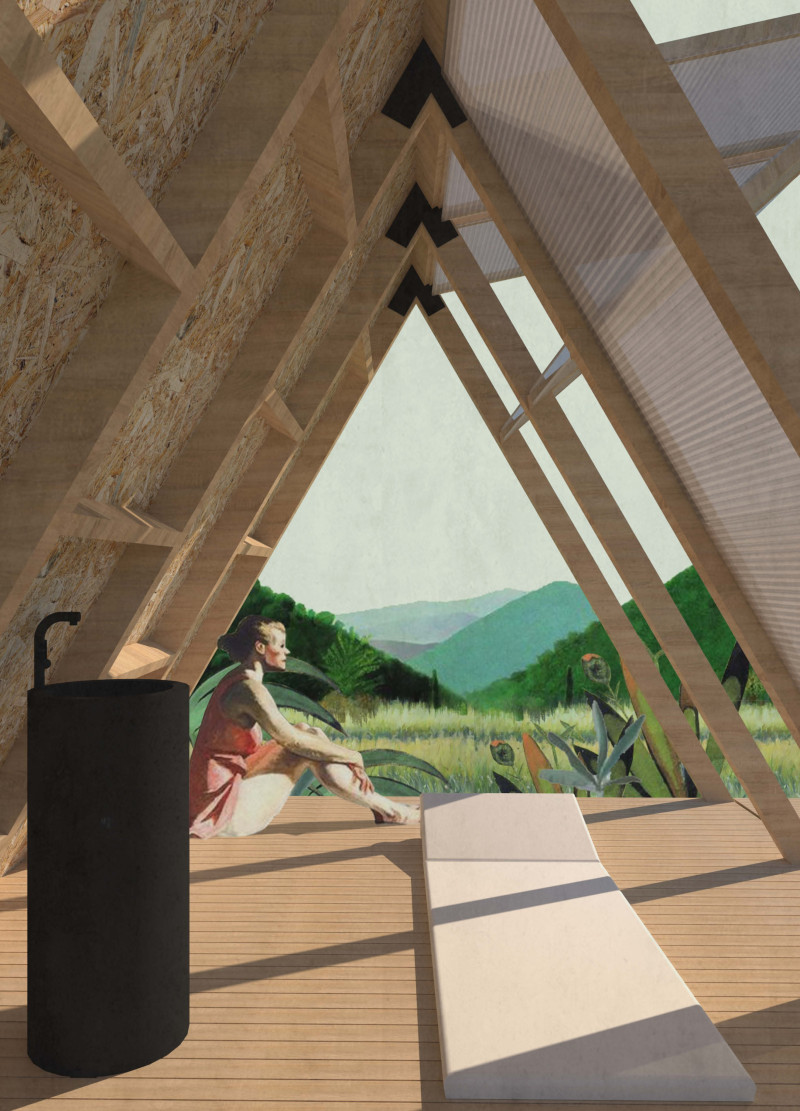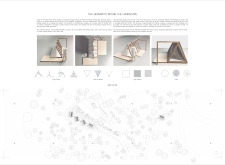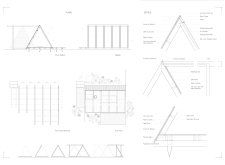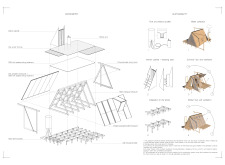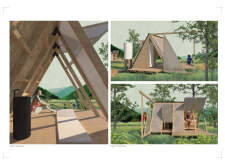5 key facts about this project
Located in the serene Vale de Moses, the design aims to blend built spaces with the surrounding natural environment. The project serves as a retreat where visitors can participate in wellness therapies, particularly massage. The central design concept revolves around the use of the equilateral triangle, a shape that symbolizes simplicity and efficiency while addressing the fundamental need for shelter.
Geometric Form and Functionality
The equilateral triangle serves as the primary element of the design. This geometric shape offers both stability and a pleasing visual aspect. The structure widens at the base and narrows at the top, which allows for effective water drainage and maximizes the available internal space. Within this triangular framework, essential amenities like changing rooms and storage areas are integrated, ensuring practical needs are met while maintaining an open, inviting atmosphere.
Sustainable Practices
An important aspect of the design is its rainwater harvesting system. This system collects and filters rainwater for use inside the building. By doing so, it promotes sustainable resources and encourages visitors to engage with the idea of environmental responsibility. The design reflects a commitment to minimizing ecological impact while highlighting the importance of water management in the natural landscape.
Materiality and Adaptability
The structure is primarily made of three wooden beams that form the triangular framework. This choice provides strength while keeping the design simple. Polycarbonate panels are also a key feature, allowing these panels to be opened completely, creating a connection between inside and outside. This flexibility enhances the user experience by providing natural ventilation during warmer weather and collecting solar heat during colder months.
Relationship with the Landscape
To adapt to the natural topography, the project uses adjustable wooden pilotis for its foundation. This approach allows the structure to remain stable while respecting the lay of the land. Such design decisions not only fulfill practical needs but also connect with the surroundings. The result is an inviting retreat that fosters a sense of tranquility, encouraging visitors to engage more deeply with the environment around them. The architecture stands as a thoughtful response to both human needs and the beauty of nature.


